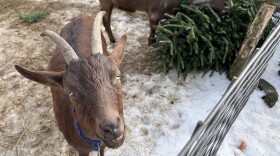Delicate wildflowers poke through a dry, mat of last autumn's leaves pressed paper thin by the weight of a now-vanished snow pack.
Wildflower strategy is: bloom early, grow quickly in late spring and then die back. These "spring ephemerals" create an elegant spring nutrient dam, locking-up important soil nutrients otherwise washed-away by snowmelt or rain. When flowers die-back in summer shade, they release nutrients back to the roots of trees above.
The common species include carpets of delicate white and pink-striped "spring beauties" found on rich, moist hardwood sites under white ash and sugar maple. In the deep shade and acidic needles beneath pine, spruce or fir, look for Canada mayflowers, starflowers, pink lady slippers and blue-bead lilies under the conifers.

Stonewalls and field edges host striped Jack-in-the-pulpits and red trilliums called “Wake Robin.” Red trillium is also called “Stinking Benjamin”- its scent designed to mimic rotting meat to attract specific carrion flies as pollinators.
Neon yellow “marsh marigolds” grow in full sun in peaty wetlands. Stocky little “Coltsfoot” resembles a coarse dandelion and favors sunny, roadside ditches choked with winter silt and road sand. Tightly coiled, fuzzy fern "fiddleheads" unfurl.
Tender green beech, birch, sugar maple and ash leaves and magenta red oak and red maple leaves flutter above the waxy remains of miniature bud scales that now litter the forest floor.
Poet, Robert Frost wrote in “Nothing Gold Can Stay”
Nature's first green is gold, Her hardest hue to hold.
Her early leaf's a flower; but only so an hour...








